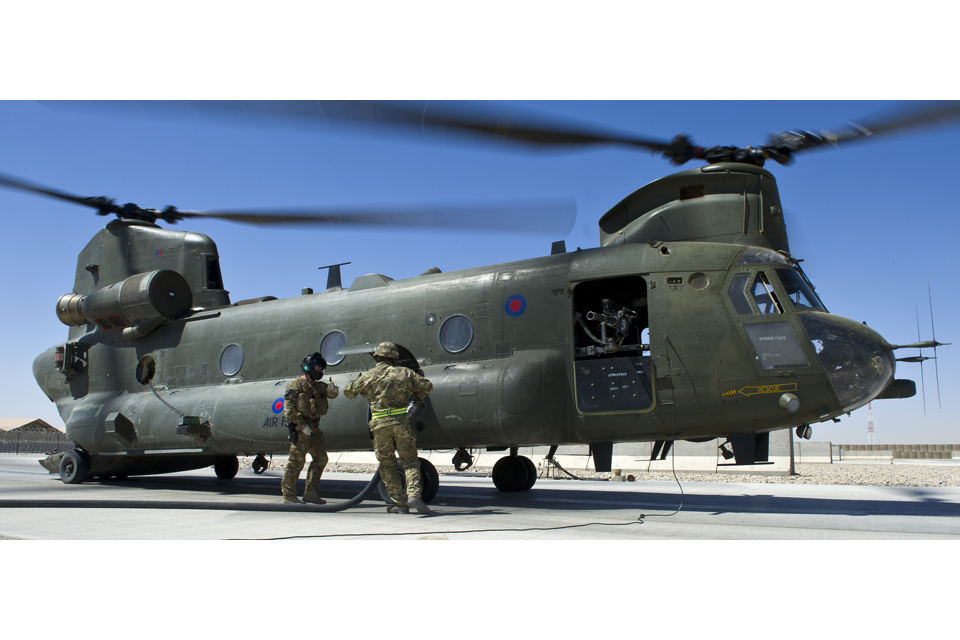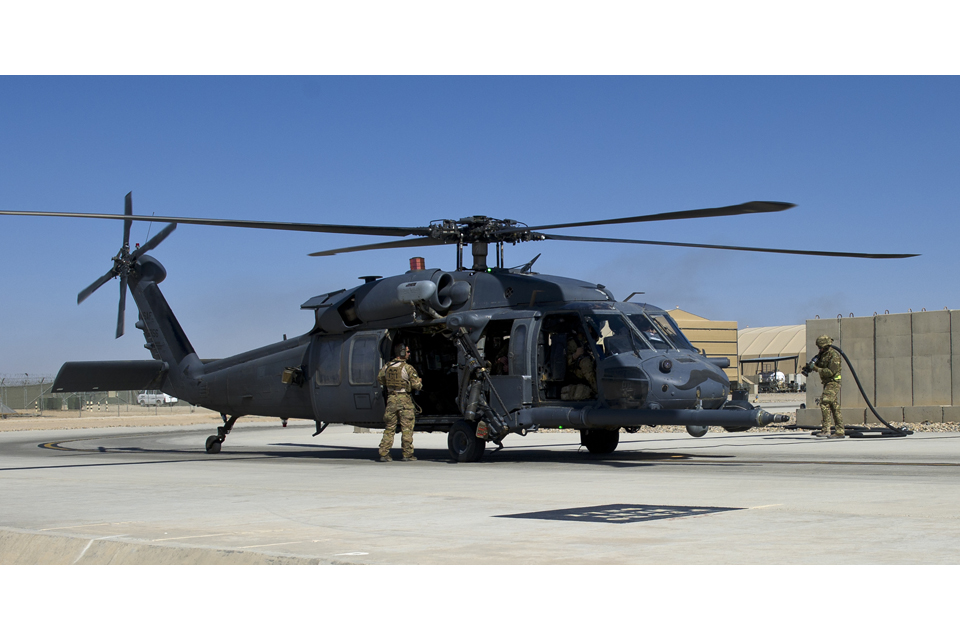Senior Aircraftwoman Joanna Tomsett refuelling an Army Lynx helicopter (Picture Sergeant Dale Hunt RAF, UK MoD)
24 September 2013 Ministry of Defence
An RAF team is providing pit-stop-style refuels at Camp Bastion to keep military helicopters in the air over Afghanistan.
On front line operations in Afghanistan helicopters are in high demand. The ‘rotary wing assets’, in military language, are the lynchpins of tactical mobility, able to operate at much lower heights and speeds than fixed-wing aircraft. In a theatre environment the quick turnaround of aircraft at the pumps is essential.
The RAF Tactical Supply Wing (TSW) provides 24-hour aviation fuel support to both UK and visiting coalition helicopters from the flight line at Camp Bastion airfield.

At a moment’s notice, the TSW personnel are ready at the Helmand base’s aerial gas pumps, or ‘bulk fuel installations’, to carry out the specialised pit-stop-fast ‘rotors turning refuels’ (RTRs). Within a matter of minutes an aircraft can be ready to head off on its next flight.
On average, the TSW refuels more than 300 aircraft a week, pumping over 300,000 litres of fuel in that time.
In addition to providing refuels from Camp Bastion, TSW personnel are also ready to assist in the recovery of unserviceable aircraft anywhere in the area of operations. Within 30 minutes they can be refuelling or defueling a stranded helicopter in order for it to be transported back to a main operating base.
The TSW comprises 19 personnel from supply, engineering or military transport backgrounds. From senior aircraftmen to officers commanding, all are trained primarily in RTRs, ensuring each team member is capable of delivering this fundamental service.

Senior Aircraftwoman Joanna Tomsett is a supply specialist on her second deployment to Afghanistan; her first with the TSW:
I am really enjoying TSW,” she said. “There are lots of different parts to the job, and that keeps things interesting. Working with the rotary wing I feel a lot more involved in it all.
We work as a close-knit team on TSW, train as a team in the UK, and then deploy together. The guys are great.

Corporal Neil Sinclair, a military transport driver, is on his second deployment with the TSW. He said:
The main job out here is delivering fuel to the aircraft and that takes priority over everything we do. The best thing about the job is actually putting the fuel into the aircraft.
A lot of people may actually question why they are here in Afghanistan, but you really get a feeling of worth doing this job. We refuel an aircraft and know that it is going back out on operations to support ISAF (International Security Assistance Force) or ANSF (Afghan National Security Forces) troops. It really does give you a sense of achievement.
The Officer Commanding TSW, Supplier Warrant Officer Gaz Barlow, said:
TSW is all about teamwork. We train together and work together. It is even more important as we deploy as a formed unit … and it really does work.
commenter cet article …


















/http%3A%2F%2Fwww.hurriyetdailynews.com%2Fimages%2Fnews%2F201304%2Fn_45107_4.jpg)
/http%3A%2F%2Fstatic.progressivemediagroup.com%2Fuploads%2Fimagelibrary%2FApache_Guardian.jpg)
/http%3A%2F%2Fwww.flightglobal.com%2Fassets%2Fgetasset.aspx%3Fitemid%3D50199)
/http%3A%2F%2Fwww.asdnews.com%2Fdata_news%2FID48696_150.jpg)
/http%3A%2F%2Fwww.asdnews.com%2Fdata_news%2FID48702_150.jpg)
/http%3A%2F%2Fwww.strategypage.com%2Fgallery%2Fimages%2Fscan-eagle-at-sea-04-2013.jpg)
/http%3A%2F%2Ffarm9.staticflickr.com%2F8099%2F8660204148_a28ba15ff3_b.jpg)
/http%3A%2F%2Fwww.wired.com%2Fimages_blogs%2Fdangerroom%2F2013%2F04%2F6134.jpg)
/http%3A%2F%2Fdefense-update.com%2Fwp-content%2Fuploads%2F2013%2F04%2Ff35_costs.jpg)
